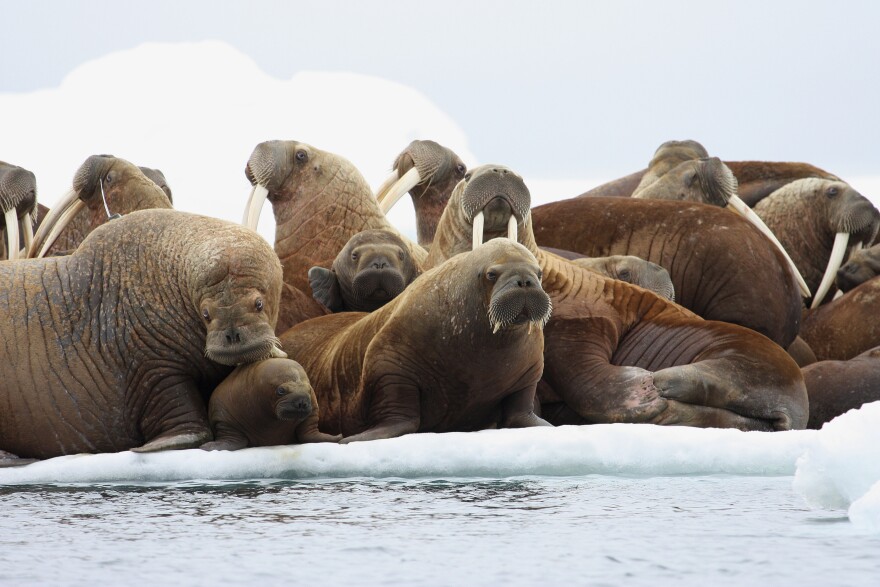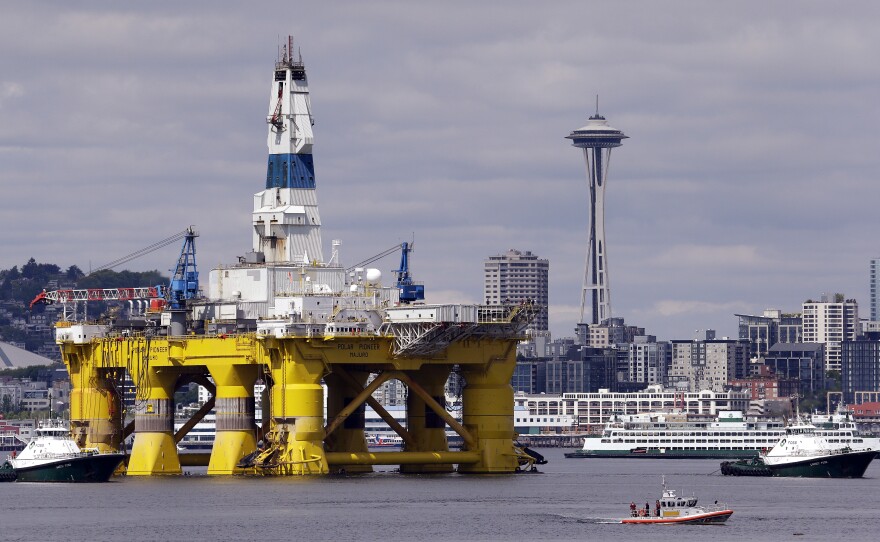After sinking eight years and more than $8 billion into the effort, Shell Oil is pulling out of the Arctic Ocean. The company dropped the surprising news in a Sunday-night press release.
Shell officials said the company safely drilled a well more than mile beneath the floor of the Chukchi Sea this summer. They found indications of oil and gas there, but not enough to warrant further exploration.
“We thought it was the potential to be a multibillion-barrel prospect. That is not the case. It is not commercial,” said Meg Baldino, a spokesperson for Shell Alaska.
Oil prices have plummeted in the past year. A bonanza of fracking in the lower 48 has made costly oil from the Arctic Ocean less attractive as a global commodity.
The announcement comes as Shell’s window for drilling in the brief Arctic summer draws to a close.

Baldino says about 400 people work in Anchorage on the Arctic drilling effort. Up to 3,000 Shell contractors are working in the field at any given time. Two drill rigs and much of the 30-vessel fleet are still in the Chukchi Sea.
“The Burger J well will be sealed and abandoned, so we will begin demobilization immediately and head south,” said Baldino. “You know, everything has changed, so there’s lots of details of what will happen next that are going to be worked out in the coming weeks.”
Michael Levine is a Juneau-based attorney with the environmental group Oceana.
“It’s really a shocking development,” said Levine. “It’s a good day for the Arctic Ocean and lets us move past arguing about Shell and Shell’s plans and its investment and move toward talking about the future of the Arctic Ocean.”

Environmental groups had been pushing unsuccessfully for the Obama Administration to block the drilling. Instead, the Obama Administration gave Shell the green light. The Interior Department did require Shell to keep its rigs at least 15 miles apart if they were drilling at the same time. That was done to protect walruses in the area.
Shell has spent $1.4 billion this year alone in the Arctic. The company cited high costs as well regulatory uncertainty for its decision to quit the Arctic.
Alaska’s Congressional delegation blamed Obama Administration regulations for the sudden end of Arctic offshore drilling. Governor Bill Walker also faulted the regulations.
Typically when you bring a rig and spend that much money, you’ll drill multiple wells, and to be able to drill just the one, that was unfortunate. You’re betting everything on that particular well,” said Walker.

Shell has had problems it could not blame on regulators. In past years, its rigs have run aground, ship construction ran behind schedule, its safety equipment was damaged.
This year, one of its icebreakers was on its way out of Dutch Harbor when a rock tore a three-foot hole in the ship’s hull.
Ship-salvage expert Dan Magone supervised the temporary repair work in Dutch Harbor.
“We would’ve gotten them squared away and on their way within a few days. The complication was that they were under contract to Shell. So the level of scrutiny and Shell’s bureaucracy turned it into this great big deal, you know? Makes the government look like patty-cakes, ”
That ship went to a dry dock in Oregon for permanent repairs before returning to the Arctic. That cost Shell several weeks of its summer drilling season. The company expects to take a $4 billion hit on its balance sheet from shuttering the project.
Any impacts on Alaska are probably more long-term than short-term. Any oil from Shell’s Arctic venture would have taken about a decade before it wound up in a pipeline or anyone’s gas tank.









